|
Wirebonding: |
||
 Free Air Ball (FAB) is captured in the chamfer |
Ball Bonding Cycle - Stage 1 The capillary is accurately targeted by a computerized, video-enabled system on the die's bond pad; the FAB is formed at the end of the wire. When the capillary descends, the FAB is pulled into the Inner Chamfer (IC) and centered right above the pad. |
|
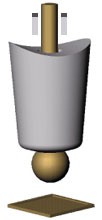 FAB is captured in the chamfer |
 1st Bond Formation |
Ball Bonding Cycle - Stage 2 The 1st bond is created when the FAB is squashed by the capillary against the pad. During this process, the FAB is gripped in the capillary chamfer while force and ultrasonic vibrations are transmitted through the capillary and heat is applied throughout. |
 Capillary rises to loop height position |
Ball Bonding Cycle - Stage 3 When the 1st bond is formatted, the capillary rises above the pad. The opening of the clamp allows the wire to slide through and reach the desired loop height. At this point the clamp closes again. |
|
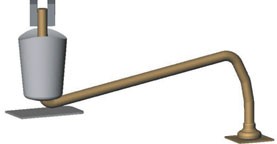 Formation of the loop |
Ball Bonding Cycle - Stage 4 While the clamp is closed, the capillary moves towards the lead and is lowered to form the 2nd bond. This lowering motion forms the loop |
|
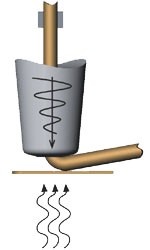 Formation of the 2nd bond |
Ball Bonding Cycle - Stage 5 The capillary presses the wire against the lead while force, heat, and ultrasonic energy are applied. This pressure produces the 2nd bond, which consists of the stitch bond and the tail bond. |
|
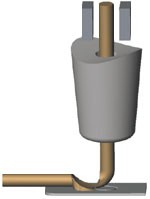 Creation of the tail length |
Ball Bonding Cycle - Stage 6 At this stage the clamp opens while the capillary rises from the lead to a carefully defined point. The strength of the tail bond is a critical factor for the success of the entire cycle. A proper tail bond assists in avoiding such phenomena as "EFO open" and "short tail". The tail bond needs to remain attached to the lead until the capillary reaches the desired height. |
|
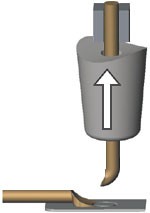 Disconnection of the tail bond |
Ball Bonding Cycle - Stage 7 At this stage the capillary rises above the lead. At the desired height, as the capillary continues its upward ascent, the clamp closes and the tail bond is detached from the lead while the stitch bond remains attached. |
|
 Formation of a new FAB |
Ball Bonding Cycle - Stage 8 The tail bond is now positioned above the pad. The end of the tail melts as the result of an electrical spark originated by the Electronic Flame Off (EFO) wand. The surface tension of the melted gold causes the drop to acquire the shape of a nearly-perfect sphere, thus, creating the FAB. When the FAB solidifies, the cycle begins anew. |
|
|
Animation of the bonding cycle |
||
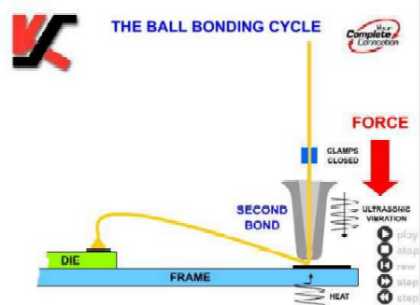 |
||
|
Bonding Tool and Bond Images |
||
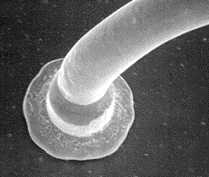
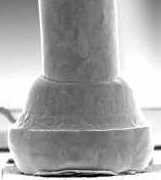 |
||
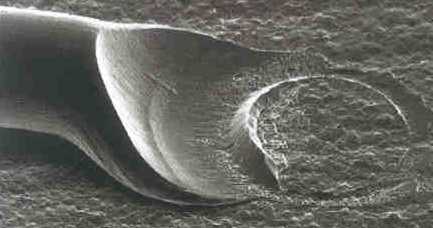 |
||
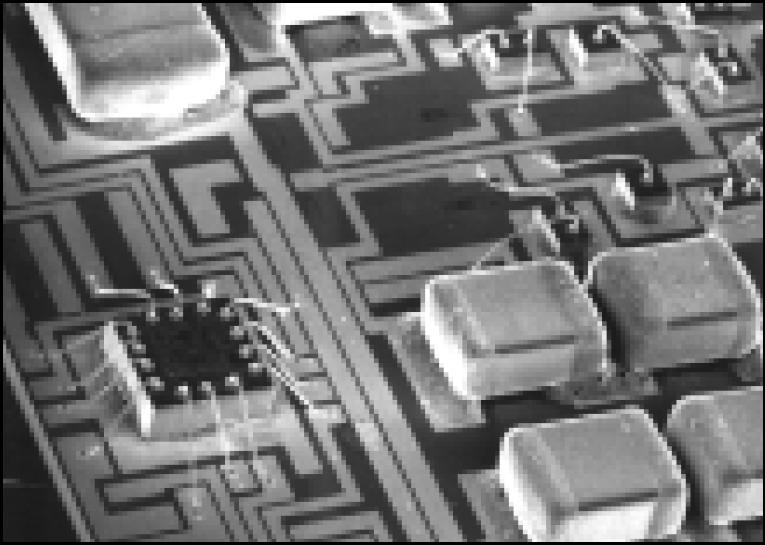
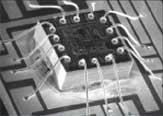
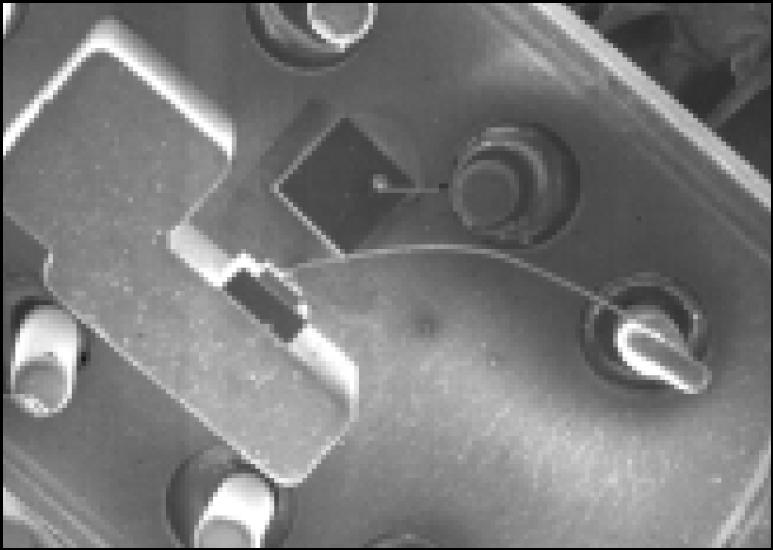 |
||
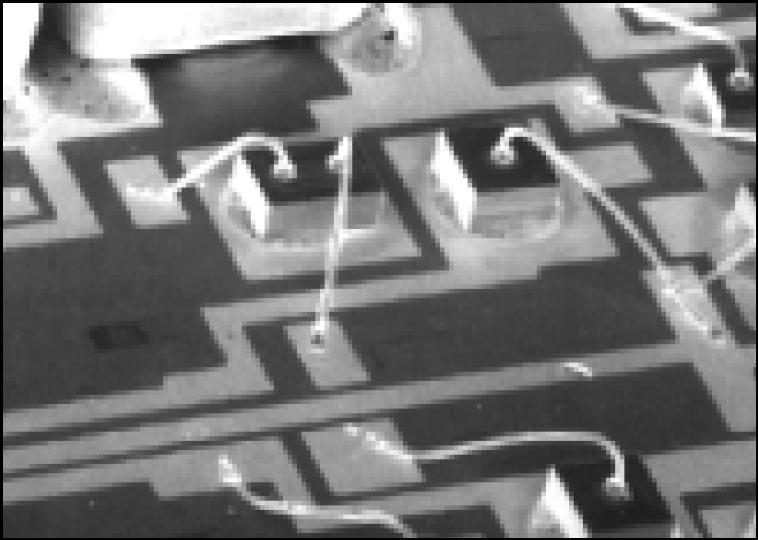
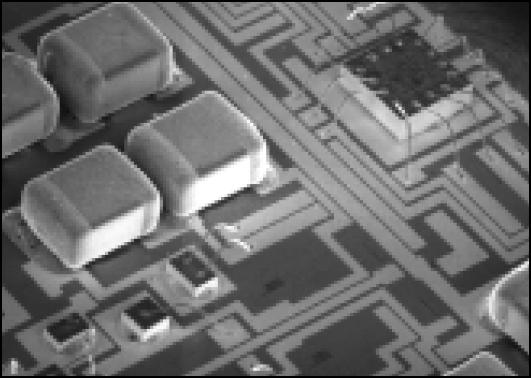
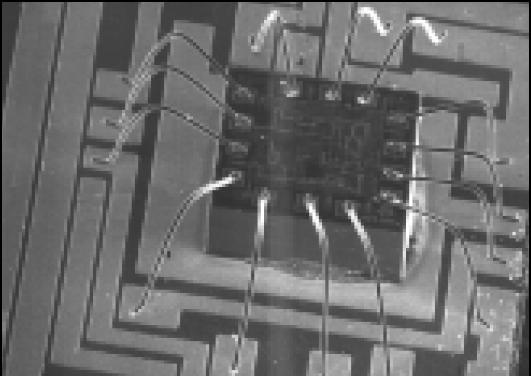 |
||
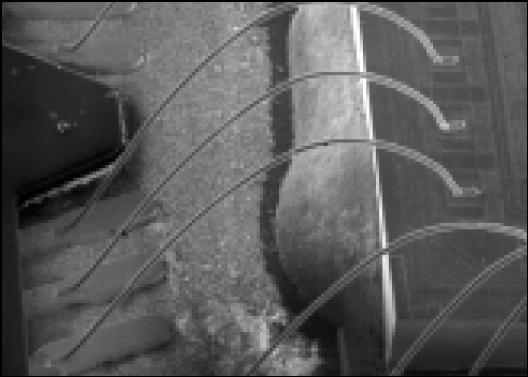
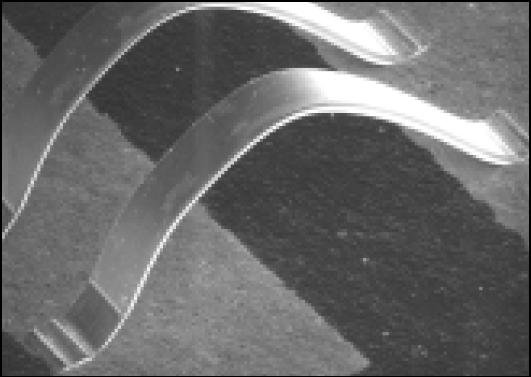
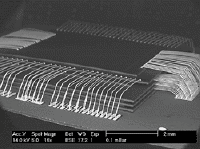 |
||
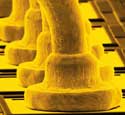


 Gold Wire Bonds |
||
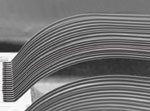
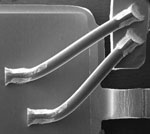 Aluminum Wire Bonds |
||
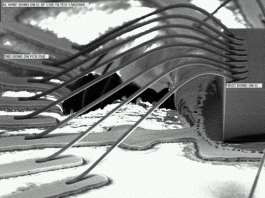
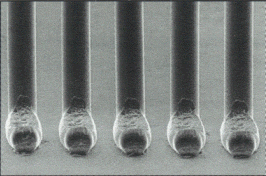 Aluminum Wire Bonds |
||
 Copper Wire Bonds |
||
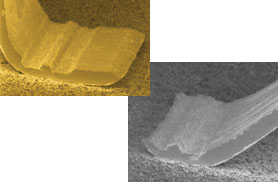 Ribbon Bonding |
||
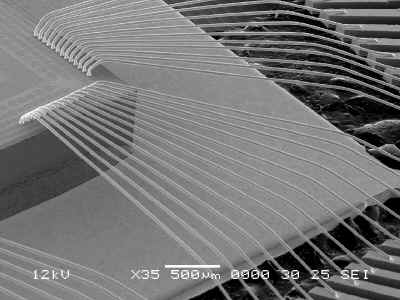
 |
||
 |
||
 |
||

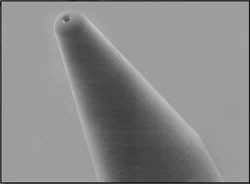 |
||
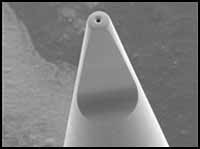
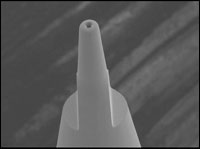 |
||

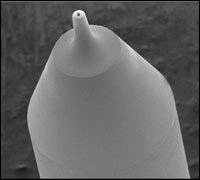 |
||